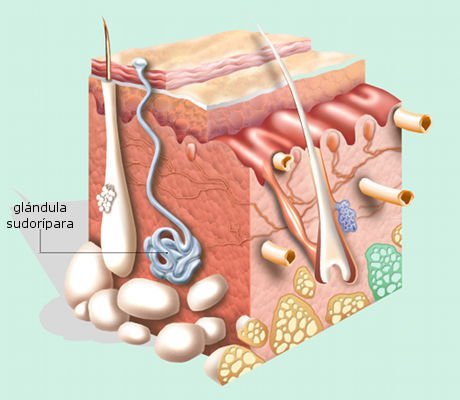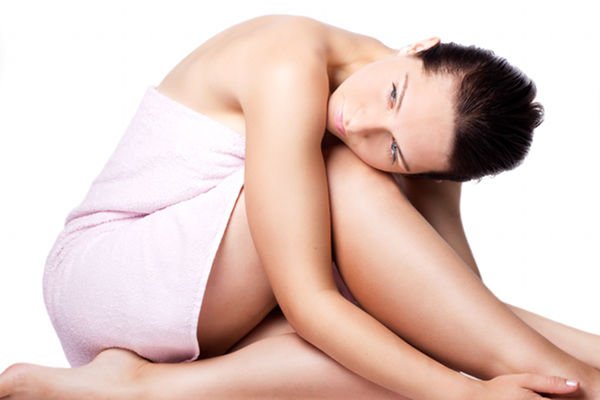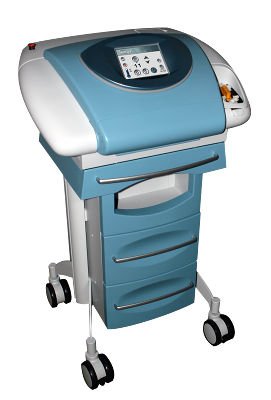Perspiration or sweating is a function of the skin that maintains a constant body temperature. However, unpredictable and uncontrollable hyperhidrosis or excessive sweating can hinder the sufferer's social or professional relationships. IML is equipped with therapeutic options for the personalised treatment of excessive sweating.
Hyperhidrosis is the excessive sweating or perspiration that occurs spontaneously, not caused by high temperatures or physically and emotionally tense situations.
Perspiration is a bodily function that involves the liberation of liquids high in salts, from the sweat glands. This function basically serves the purpose of favouring thermoregulation, that is, to maintain the body temperature constant at 37 ºC.
When the body needs to free heat, perspiration occurs and the skin is cooled down by evaporation. This is why we sweat when hot, during physical activity or in tense situations, in which nervous discharge increases our body temperature.
The human body has a total of 2 to 4 million sweat glands, that are activated during puberty . Sweat glands in the palms, soles, skull, face and armpits are particularly sensitive to psychological stimuli.

Sweat glands in the hands, feet and armpits are more sensitive to psychological stimuli.
Hyperhidrosis can affect 2% of the white population. This percentage is higher is Asian patients, above all in those of Japanese origin. It is most common in the 25 to 64 year age group and in 40% of the cases, another family member also suffers from it, which indicates a genetic component.
It is observed mainly on hands, armpits, feet and pubic region, due to the high concentration of sweat glands in these areas.
Hyperhidrosis presents different degrees of affectation for the patient:
Although this is fairly frequent problem that can cause stress and anxiety, and despite the limitations faced in the place of work, study and socially that hyperhidrosis causes, a great deal of sufferers refrain from visiting the dermatologist when the symptoms first appear.
The psychological impact of hyperhidrosis can cause complexes or interfere in the daily lives of those suffering from it. Affected patients try and adapt themselves to the problem and tend to adopt particular behaviours:

According its location, hyperhidrosis can be axillary, palmoplantar, gustatory or generalised
The cause of primary hyperhidrosis is unknown.
It is clearly related to sympathetic over-activity and an excessive sudomotor function response.
Patients suffering from it are well aware that stressful situations, such as excitement or nervousness can exacerbate the situation. A common complaint among patients suffering hyperhidrosis is they get nervous because they sweat, then sweat more because they are nervous.
Certain habits, such as drinks, nicotine, caffeine and certain foods or smells can also trigger excessive sweating.
Secondary hyperhidrosis is usually generalised and presents itself within the symptoms of an underlying condition:
Excessive sweating of up to 100 cm2 can be related with the presence of (among others):
The dermatologists at IML perform a case history to diagnose the degree of hyperhidrosis and then choose, together with the patient, the treatment best suited to them, according to the patient's personal characteristics and the severity of the symptoms.
Hyperhidrosis treatments can be dermatological, aimed at inhibiting secretion from the sweat glands or surgical, which entails their excision or ablation.
Laser Assisted Ablation for axillary hyperhidrosis
IML has SlimLipo Aspire at its disposal, this is dual laser power technology emitting at 924 and 975 nm, that melts away the sweat glands lodged between the subcutaneous fat tissue. Over 90% of these glands are eliminated in a procedure performed under local anaesthesia and with almost no recovery period.
SlimLipo Aspire® is an FDA-approved technology for laser-assisted lipolysis. The sweat glands in the armpits are housed among the fat cells in the subcutaneous tissue, making this laser the optimum treatment for the ablation of the structures responsible for hyperhidrosis.
The technique is performed through a 2 mm incision, through which the Klein' formula local anaesthesia is administered.
A fine and flexible cannula with optical fibre on the end is then placed into the incision through which the laser power is transmitted.
Once inside the skin, the physician moves the optical fibre gently and continuously over the sweat glands selectively eliminating them.
A paper suture and an adhesive gauze are placed on the incision, which the patient should keep on for 48 hours.
Recovery causes no discomfort and allows the patient to resume their normal activity just a few hours after the procedure.

The dual laser melts the sweat glands lodged in the subdermal fat tissue
If you would like personalised information of the hyperhidrosis treatment most suited to you, request a free informative consultation with one of our dermatologists now.